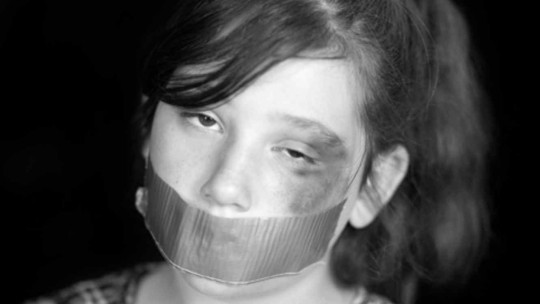Why doesn’t the attacked woman leave her attacker? Why doesn’t she report the attacks? Why do they often withdraw the complaint after reporting it? What do attacked victims feel at different stages of the attack? How do they become victims?
We have all heard these types of questions among the public. We can answer it if we look carefully at the victimization process , which, as the name already indicates, is not a situation that occurs punctually and in isolation, but rather something that develops over time. A relationship where there is abuse does not usually begin to occur overnight.
It is a process that often begins in a subtle way and causes the victim to not always be aware of the seriousness of the situation they are experiencing.
The cycle of violence and the victimization process
In 1979, the renowned American psychologist Leonore Walker shed light on how victimization processes work through her research designed to try to understand and answer the questions previously raised.
From the testimonies of abused women, it was realized that they are not attacked all the time or in the same way, but rather There are phases of violence, which have varying durations and different manifestations This is what has been called the cycle of violence, one of the most widespread theories on the internal dynamics of violent relationships in the world.
This theory contemplates the existence of four phases in all dynamics of relational violence. The phases into which the cycle of violence is divided follow one another, a fact that precisely makes it difficult for the cycle to be broken. In the same relationship, the cycle can be repeated infinite times and the duration of its phases can be variable

The 4 phases of abuse
Below I will describe the different phases that an abused person goes through.
1. Calm Phase
In the first phase, the situation is calm No disagreements are detected and everything is lived in an idyllic manner. But, when the cycle has been repeated several times, the victim may begin to have the feeling that calm is maintained because everything is correct according to the point of view of the aggressor who is, ultimately, the driving force of the cycle.
2. Voltage Accumulation Phase
Small disagreements begin, well the aggressor feels increasingly questioned by his victim It may be that the victim, in his attempt to keep things the way the aggressor wants, makes a mistake because the increase in tension affects his ability to concentrate. In this phase, in fact, psychological abuse begins to be exercised based on the idea of control and that is a warning sign of what is to come.
Many aggressors excuse themselves by saying that they were warning their victim but that he did not listen to them and continued to provoke them. The woman tries to calm, please or, at least, not do what may bother her partner, in the unrealistic belief that she can control the aggression.
Tensions are built and manifest in a specific way as certain behaviors of verbal or physical aggression of a mild and isolated nature, based on small incidents: subtle put-downs, insinuations, suppressed anger, sarcasm, long silences, unreasonable demands , etc. The victim adopts a series of measures to manage this environment, and progressively acquires psychological self-defense mechanisms to anticipate or avoid the aggression.
The aggressor’s actions are directed towards a goal: destabilize the victim In this phase, the victim tends to minimize or deny the problem (“we have our pluses and minuses, like everyone else”), justifying the violent behavior of the aggressor (“since he is very passionate, he lets himself get carried away by anger…” ), and make allusions to positive aspects of your partner (“he is my only support in life”).
3. Explosion Phase
The aggressor takes action. It is characterized by a strong release of the tensions caused in the previous phase by the aggressor The most important physical, psychological and/or sexual attacks occur.
Compared to the other phases, this is the shortest but also the one that is experienced with the greatest intensity. The most important consequences for the victim occur at this moment, both on the physical and psychological levels, where a series of psychological alterations continue to be established due to the situation experienced
In this phase, the victim may maintain high expectations of change in his or her partner (“over time he will change, you have to give him time…”), and feelings of guilt appear (“I deserve it,” “it’s my fault for having chosen him.” him”).
4. Honeymoon Phase
At the beginning, it is usually the phase responsible for the victim remaining in the cycle because in it The aggressor begins a series of compensatory behaviors to show the victim that he is sorry and that it will not happen again This makes the victim also see the positive side of the aggressor and becomes trapped in reflections about how to make this side appear more frequently.
This phase is characterized by extreme kindness and “affectionate” behavior on the part of the aggressor (attentions, gifts, promises…). The aggressor tries to influence family and friends to convince the victim to forgive him It is common to try to make the victim see that the aggressor needs professional help and her support, and that he cannot abandon him in this situation; This is why some victims return to the aggressor (if they have stopped living with him) and/or withdraw the complaint they had previously filed.
But, over time, this phase usually disappears and the cycle is reduced to only three phases: calm, accumulation of tension and explosion. This disappearance of the honeymoon phase agrees with a verbalization that many victims make when they comment that “as long as he doesn’t yell at me and doesn’t mistreat me, that’s enough for me” thus ignoring the fact that a relationship is sustained by things that go beyond the absence of mistreatment.
As the honeymoon phase shortens The attacks are becoming stronger and more frequent which decreases women’s psychological resources to escape the spiral of violence.
Connecting with the Theory of Learned Helplessness
Leonore Walker postulated that Seligman’s Theory of Learned Helplessness was one of the theories that could explain the psychological and behavioral reactions of women who suffered abuse.
Following this theory, Continuous abuse would cause the cognitive perception that one is incapable of managing or resolving the situation one is going through , which would generalize to future situations. This feeling of helplessness would lead to an increase in depression, anxiety, and produce a debilitating effect on problem-solving skills.
Abused women would reach a point where they would recognize that their responses have no impact on their situation of abuse because they have put into practice different alternatives to change their own behavior or that of the aggressor and despite them have continued to suffer abuse.
Final thoughts
Some authors have criticized the theory of learned helplessness applied to abused women, since can be misinterpreted and used to support stereotypical concepts of passive women or helpless victims Walker states that the term “helplessness” should be used very carefully, as it gives an image of abused women as not very capable or responsible. That is why it must be emphasized that one of the pillars of working with victims is to promote their autonomy/self-care, their self-esteem and their own responsibility.
Battered women are not guilty of what has happened to them, but they are responsible, after therapeutic work and being aware of the nature of the cycle of violence, of prevent a new situation of violence from occurring in a future relationship as a couple At that point they will be trained to identify signs that indicate that a relationship is not “healthy.”









